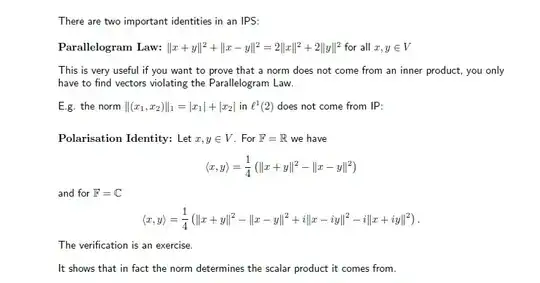Possible Duplicate:
Norms Induced by Inner Products and the Parallelogram Law

So suppose we are given a norm on a vector space.
If the Parallelogram law holds does that automatically mean we have the inner product which we can find using the Polarisation identity? Or is showing the Parallelogram law holds not sufficient to show that there exists an associated inner product?
Also, given that the Parallelgram law fails, e.g. $\Vert(x_1,x_2)\Vert_1 = |x_1| + |x_2|$ in $\ell^1(2)$, is there any significance in considering the Polarisation identity?